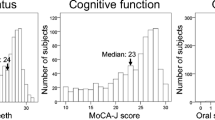Abstract
Stereognosis is the ability to recognise and discriminate forms. Oral stereognostic ability has been studied in different reports. The experimental design of the test is of primary importance as both the method used and the material applied may influence the results dramatically. The form, size and surface characteristics of the test piece, the presentation order, subject-related factors and the method of scoring all have their effect on the results. With regard to subject-related factors, ageing has a negative influence on stereognostic ability; gender is considered of no importance. Another influencing factor is dental status. A healthy natural dentition offers a very good oral stereognostic ability. Edentulous subjects usually show a decreased oral stereognostic ability, depending on the rehabilitation form. A number of questions have been addressed, especially with regard to the perception itself. Receptors mainly involved in oral stereognostic ability are located in various oral structures and form perception results from an association of more than one group of receptors. The following review tries to deal with these questions and attempts to provide clear guidelines for further research on oral stereognosis.
Similar content being viewed by others
Author information
Authors and Affiliations
Additional information
Received: 19 September 1997 / Accepted: 2 February 1998
Rights and permissions
About this article
Cite this article
Jacobs, R., Serhal, C. & van Steenberghe, D. Oral stereognosis: a review of the literature. Clinical Oral Investigations 2, 3–10 (1998). https://doi.org/10.1007/s007840050035
Issue Date:
DOI: https://doi.org/10.1007/s007840050035




